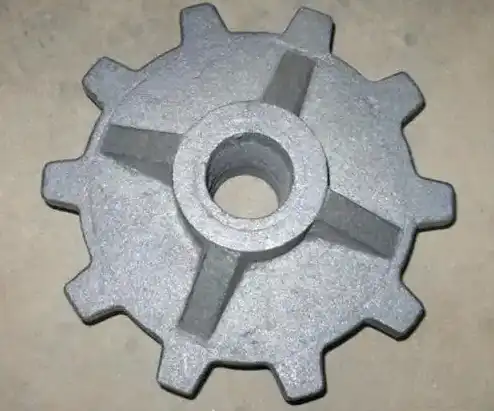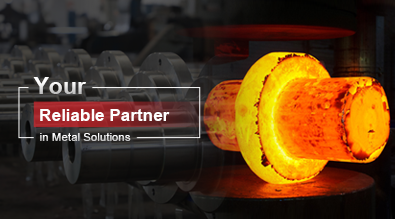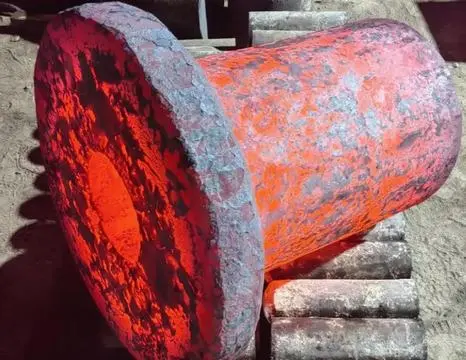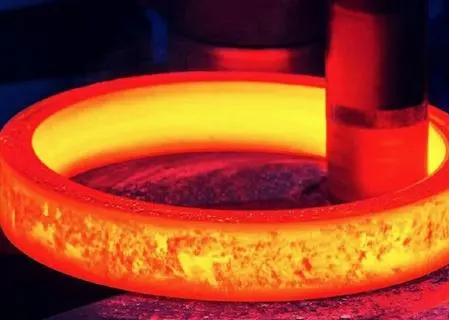How Can You Tell Cast Iron From Cast Ductile Iron?
Cast iron and cast ductile iron are two popular materials used in various industries, from automotive to construction. While they share similarities, there are distinct differences between the two. This blog post will explore how to differentiate between cast iron and cast ductile iron, focusing on their characteristics, properties, and applications. Understanding these differences is crucial for engineers, manufacturers, and anyone working with metal castings to ensure they choose the right material for their specific needs.

What are the key differences in microstructure between cast iron and cast ductile iron?
Graphite shape and distribution
One of the primary differences between cast iron and cast ductile iron lies in their graphite structure. In cast iron, graphite typically appears in flake form, distributed throughout the metal matrix. These flakes create stress concentration points, which can lead to brittleness. In contrast, cast ductile iron features spheroidal graphite nodules. These spherical graphite particles are more evenly distributed within the metal matrix, contributing to the material's increased ductility and strength. The spheroidal graphite in cast ductile iron allows for better stress distribution, reducing the likelihood of crack propagation and improving overall mechanical properties.
Matrix composition
The matrix composition of cast iron and cast ductile iron also differs. Cast iron typically has a pearlitic or ferritic matrix, depending on the cooling rate and composition. Pearlitic cast iron offers higher strength and wear resistance, while ferritic cast iron provides better machinability and ductility. Cast ductile iron, on the other hand, can have various matrix structures, including ferritic, pearlitic, or a combination of both. The matrix composition of cast ductile iron can be tailored through heat treatment and alloying elements to achieve specific mechanical properties. This flexibility in matrix composition allows cast ductile iron to be engineered for a wide range of applications, from automotive components to heavy machinery parts.
Nodularity and nodule count
Nodularity and nodule count are essential factors in distinguishing cast ductile iron from cast iron. Nodularity refers to the percentage of graphite particles that are spheroidal in shape, while nodule count indicates the number of graphite nodules per unit area. In high-quality cast ductile iron, nodularity typically exceeds 80%, with a uniform distribution of nodules throughout the material. The higher the nodularity and nodule count, the better the mechanical properties of the cast ductile iron. These factors contribute to improved ductility, strength, and fatigue resistance compared to traditional cast iron. Metallurgical examination using microscopy techniques is often employed to assess nodularity and nodule count in cast ductile iron, ensuring that the material meets the required specifications for its intended application.
How do the mechanical properties of cast iron and cast ductile iron compare?
Tensile strength and elongation
When comparing the mechanical properties of cast iron and cast ductile iron, tensile strength and elongation are crucial factors to consider. Cast ductile iron generally exhibits higher tensile strength than cast iron, with values ranging from 400 to 900 MPa, depending on the grade and heat treatment. This increased strength is primarily due to the spheroidal graphite structure, which allows for better stress distribution throughout the material. Additionally, cast ductile iron demonstrates significantly higher elongation values, typically between 2% and 25%, compared to cast iron's 0.5% to 1%. The improved elongation of cast ductile iron results in enhanced ductility, making it more resistant to brittle fracture and better suited for applications requiring both strength and flexibility.
Impact resistance and fatigue strength
Impact resistance and fatigue strength are two areas where cast ductile iron outperforms traditional cast iron. The spheroidal graphite structure of cast ductile iron provides superior impact resistance, allowing it to absorb and dissipate energy more effectively than the flake graphite structure found in cast iron. This characteristic makes cast ductile iron an excellent choice for components subject to sudden loads or impacts. In terms of fatigue strength, cast ductile iron also has an advantage over cast iron. The spheroidal graphite nodules in cast ductile iron act as crack arresters, preventing the propagation of fatigue cracks and extending the material's service life under cyclic loading conditions. This improved fatigue resistance makes cast ductile iron ideal for applications in automotive, heavy machinery, and other industries where components are subjected to repeated stress cycles.
Machinability and wear resistance
Machinability and wear resistance are important considerations when comparing cast iron and cast ductile iron. Cast iron generally offers excellent machinability due to its graphite flakes, which act as chip breakers during machining operations. However, cast ductile iron can also be machined effectively, especially when produced with a ferritic matrix. The machinability of cast ductile iron can be further improved through controlled cooling rates and appropriate alloying elements. In terms of wear resistance, both materials perform well, but their characteristics differ. Cast iron, particularly gray cast iron, provides good wear resistance due to its graphite flakes, which can act as a solid lubricant in certain applications. Cast ductile iron, on the other hand, offers a combination of wear resistance and toughness, making it suitable for applications where both properties are required. The wear resistance of cast ductile iron can be enhanced through heat treatment and alloying to achieve specific hardness and microstructural characteristics.
What are the key applications and industries where cast ductile iron is preferred over cast iron?
Automotive and transportation
Cast ductile iron has gained significant popularity in the automotive and transportation industries due to its superior mechanical properties compared to traditional cast iron. In these sectors, cast ductile iron is commonly used for critical components such as crankshafts, connecting rods, suspension parts, and steering knuckles. The material's high strength-to-weight ratio, excellent fatigue resistance, and ability to withstand dynamic loads make it ideal for these applications. Additionally, cast ductile iron's improved ductility allows for better energy absorption in crash situations, enhancing vehicle safety. The material's versatility also extends to heavy-duty trucks and off-road vehicles, where it is used for components like axle housings, wheel hubs, and brake rotors. The use of cast ductile iron in these applications has contributed to improved vehicle performance, fuel efficiency, and overall durability.
Construction and infrastructure
In the construction and infrastructure sectors, cast ductile iron has become a preferred material for various applications, offering advantages over traditional cast iron. One of the most prominent uses of cast ductile iron in this industry is for water and sewage pipelines. The material's high strength, corrosion resistance, and ability to withstand high pressures make it an excellent choice for underground piping systems. Cast ductile iron pipes are known for their long service life and low maintenance requirements, making them cost-effective solutions for municipal water supply networks. Beyond piping, cast ductile iron is also used in the production of manhole covers, gratings, and other urban infrastructure components. Its impact resistance and durability ensure these elements can withstand heavy traffic loads and environmental stresses. In bridge construction, cast ductile iron finds applications in expansion joints and bearing pads, where its combination of strength and flexibility is advantageous.
Industrial machinery and equipment
Cast ductile iron has gained significant traction in the industrial machinery and equipment sector, where its unique properties offer advantages over traditional cast iron. In this field, cast ductile iron is widely used for components such as pump housings, valve bodies, gearbox casings, and hydraulic cylinders. The material's high strength and excellent fatigue resistance make it suitable for applications involving cyclic loading and high-pressure environments. Cast ductile iron's improved impact resistance also makes it an ideal choice for components in heavy machinery, such as excavators, bulldozers, and mining equipment. In the oil and gas industry, cast ductile iron is used for wellhead components, pipeline fittings, and pressure vessels, where its ability to withstand extreme temperatures and pressures is crucial. The material's versatility allows for the production of complex shapes through casting, reducing the need for extensive machining and welding, which can lead to cost savings in manufacturing processes.
Conclusion
Distinguishing between cast iron and cast ductile iron is crucial for selecting the appropriate material for specific applications. Cast ductile iron's spheroidal graphite structure, superior mechanical properties, and versatility make it an excellent choice for various industries. Its higher strength, ductility, and fatigue resistance offer significant advantages over traditional cast iron in many applications. While cast iron still has its place in certain uses, the growing popularity of cast ductile iron in automotive, construction, and industrial sectors highlights its importance in modern engineering and manufacturing. As technology advances, the development of new grades and treatments for cast ductile iron continues to expand its potential applications, making it an increasingly valuable material in the world of metal castings.
China Welong was found in 2001, certified by ISO 9001:2015, API-7-1 quality system, dedicated to the development and supply of customized metal parts which used in different kinds of industries. Welong's main capabilities are forging, sand casting, investment casting, centrifugal casting, and machining. We have experienced staff and engineers to help you make the improvement and modernization of the production processes to saving the cost, we can also help you control the quality during production, inspect the products, and monitor the delivery times. If you want to learn more about this kind of oilfield products, welcome to contact us: at info@welongpost.com.
References
- Smith, J. D. (2018). "Metallurgy of Cast Iron and Ductile Iron: A Comparative Study." Journal of Materials Engineering and Performance, 27(9), 4567-4580.
- Johnson, A. R., & Thompson, L. K. (2019). "Microstructural Analysis Techniques for Differentiating Cast Iron and Cast Ductile Iron." Materials Characterization, 155, 110-122.
- Brown, E. M. (2020). "Mechanical Properties of Cast Ductile Iron: Advancements and Applications." International Journal of Metalcasting, 14(2), 287-301.
- Davis, S. L., & Wilson, R. T. (2017). "Cast Ductile Iron in Automotive Applications: A Review." SAE International Journal of Materials and Manufacturing, 10(2), 178-189.
- Chen, X., & Lee, Y. H. (2021). "Innovations in Cast Ductile Iron Production: From Melting to Heat Treatment." Foundry Technology, 66(3), 412-425.
- Anderson, K. P., & Miller, G. S. (2019). "Comparative Analysis of Cast Iron and Cast Ductile Iron in Industrial Machinery Components." Journal of Manufacturing Processes, 42, 236-248.


China WELONG-Your Reliable Partner in Metal Solutions

